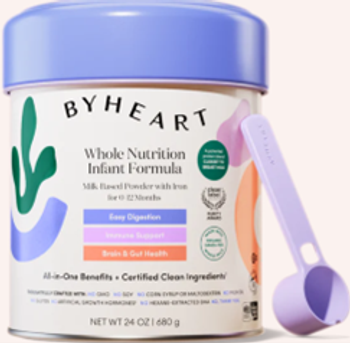
Healthy Heart From the Start
It is midwinter. I’m tired of the cold weather and the white stuff falling from the sky. Lately, I’ve been thinking about another type of white stuff that often gets a bad rap-white rice and white foods in general. Rice cereal has a special significance for pediatric health care providers because it is typically the first solid food that is recommended for the 4 to 6 month old. Recently, I read about a pediatrician who is encouraging the use of brown rice cereal or a homemade brown rice mash or vegetable puree, instead of white rice cereal.
It is midwinter. I’m tired of the cold weather and the white stuff falling from the sky. Lately, I’ve been thinking about another type of white stuff that often gets a bad rap-white rice and white foods in general. Rice cereal has a special significance for pediatric health care providers because it is typically the first solid food that is recommended for the 4 to 6 month old. Recently, I read about a pediatrician who is encouraging the use of brown rice cereal or a homemade brown rice mash or vegetable puree, instead of white rice cereal.1 This seems to make perfect sense. Surprisingly I haven’t read about this before or considered it myself.
One of the accepted tenets in nutritional counseling is the recommendation to include whole grains and avoid refined grains in the diet-even in the diets of children.2 Brown rice is described as a heart healthy food. February, being the month of Valentine’s Day and American Heart Month, is a good time to talk about healthy hearts. Along with their cardiovascular benefits, whole grains supposedly help with weight maintenance. In the United States, a country with more than 70 million obese adults, obesity prevalence rates above 20% in every state except Colorado and the District of Columbia,3 and a substantially increasing rate of childhood obesity (even in preschoolers), why not recommend whole grains right from the start? The infant should be able to tolerate whole grains, right? Perhaps the early introduction of whole grains will promote an appreciation for the taste of them.
I plan to discuss this topic with the pediatric residents I teach and at least mention the recommendation to parents, with an explanation of the reasons for the recommendation. Many parents are probably already making their own baby foods, although I haven’t seen it too often in my practice. Parents will have to be informed that it is unknown whether such a change in the 4 to 6 month old’s diet will make any difference in the rates of obesity or other health problems later in life.
On the other hand, new evidence suggests that the timing of when solid foods are introduced may make a difference in obesity rates. A study by Huh and colleagues4 found that the introduction of solid foods before age 4 months was associated with a 6-fold increase in obesity at age 3 years. The ideal start time for solids-whether white rice or brown-is a whole other issue for discussion. For now, will you reconsider the common recommendation to start with white rice?
References:
REFERENCES:
1.
Szabo L. Get the white out of baby’s first foods, pediatrician says.
USA Today.
Available at:
http://www.usatoday.com/yourlife/parenting-family/babies/2010-12-01-babyfood01_st_N.htm
. Accessed on December 7, 2010.
2.
American Academy of Pediatrics Committee on Nutrition. Prevention of pediatric overweight and obesity.
Pediatrics.
2003;112:424-430.
3.
Centers for Disease Control and Prevention. Vital signs: state-specific obesity prevalence among adults --- United States, 2009.
MMWR.
2010;59:951-955.
4.
Huh SY, Rifas-Shiman SL, Taveras EM, et al. Timing of solid food introduction and risk of obesity in preschool-aged children.
Pediatrics
. 2011. [Epub ahead of print].
Â
Newsletter
Access practical, evidence-based guidance to support better care for our youngest patients. Join our email list for the latest clinical updates.







